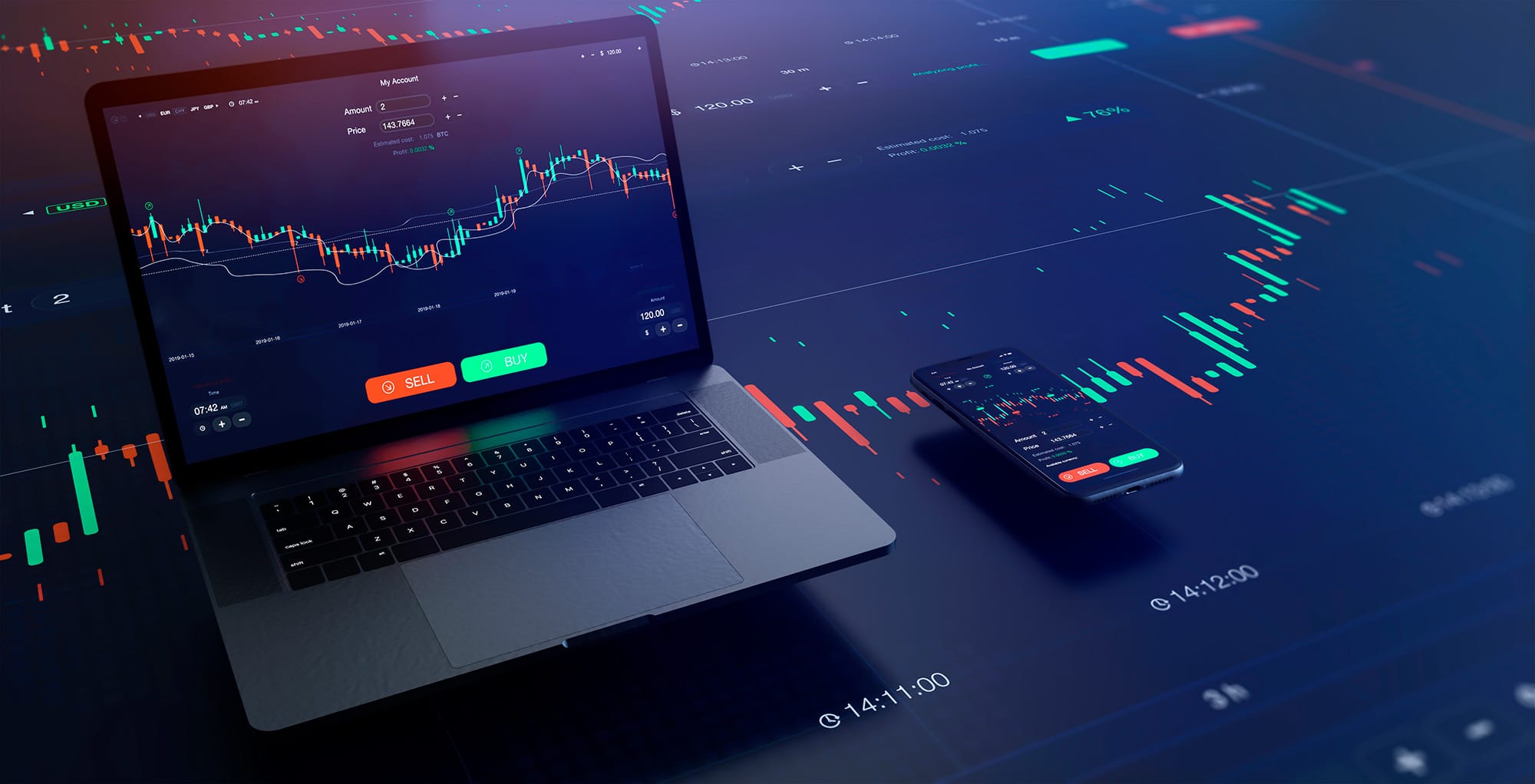You open a trade, leave it overnight, and see a small charge on your account. Such surprises make many traders ask, 'Is Forex Trading Hard?' That charge is called the swap or rollover, an overnight interest adjustment driven by interest rate differentials between currencies and by whether you are long or short the position.
Understanding swap rates, swap points, swap fee calculations, carry trade effects, and holding costs enables you to predict and control the impact of overnight positions on returns. This guide will clearly explain what a swap is in forex trading, how it affects your trades, and how to use swap knowledge to manage costs and maximize profits.
Goat Funded Trader's prop firm gives you funded capital, clear risk limits, and practical tools to test strategies that factor swap costs, so you can practice managing overnight trades without risking your own money.
What is Swap in Forex Trading?

Swap Unpacked: What a Forex Swap Really Means
A forex swap is a paired currency trade: you do a spot exchange now and agree to reverse that exchange at a set future date using a forward rate. The forward leg embeds the interest rate difference between the two currencies. That difference is what traders call the swap or rollover cost, and it shows up when you hold a position past the daily cutoff.
How the mechanics work in plain terms
Two trades happen at once. First, you buy one currency and sell the other at the spot price. At the same time, you lock a future exchange at a forward price. The forward price deviates from the spot price by the swap points, which represent the interest rate differential between the two currencies over the specified period. Banks, funds, and brokers use this structure to fund positions or hedge exposures.
What retail traders see as swap and rollover
When a retail position is kept open overnight, the broker posts a swap credit or debit to the account. If you buy the higher-interest currency and sell the lower-interest currency, you typically receive a positive swap. If you buy the lower and sell the higher, you pay a swap. Brokers normally apply this around 5 PM New York time for most pairs and commonly use a triple swap once a week to account for weekend settlement.
How swap is calculated without math fog
Think of swap as interest you either earn or pay on the notional amount because you are effectively borrowing one currency to buy another. At a simple level, the daily swap equals the notional times the interest rate difference divided by the year count. In market practice, the forward rate equals the spot rate plus the swap points. Those swap points reflect the interest differential and market demand for forwards. Brokers add their own markup, so the final swap credit or charge can differ from interbank levels.
A short numeric example
Suppose you buy EURUSD. The euro pays 3 percent, and the dollar pays 1 percent. You are long the euro and short the dollar, so the net annual interest differential is roughly 2 percent in your favor. On a one-million-euro position, a 2 percent yearly differential is about 20,000 per year, or approximately 54.79 per day. Your broker posts that as a daily swap credit. Change the rates and the sign flips, and broker markups change the actual number.
Positive swap versus negative swap
Swaps can be credit entries or debit entries to your account. They differ for long and short positions on the same pair. Swap rates fluctuate in response to central bank policy, market funding costs, and liquidity. Brokers publish swap tables and calculators so you can see long swap and short swap values for each pair before you open a trade.
Where to find swap rates and how to manage them
Always consult your broker’s swap table or use their swap calculator before holding positions overnight. Consider swap-free accounts if you cannot accept overnight interest, and plan around major rate decisions if you have prominent positions. Would you like me to run a quick swap example for a specific pair, position size, and holding period?
Related Reading
- What Is A Lot Size In Forex
- How Much Do You Need To Start Trading Forex
- How Profitable Is Forex Trading
- Forex Trading Account Types
- How To Learn Forex Trading
- Automated Forex Trading
- Fibonacci Forex Trading
- Pros And Cons Of Forex Trading
- Forex Trading Profit Per Day
How does a Forex Swap Work?

How a Forex Swap Actually Works: Two Linked Currency Exchanges
A forex swap pairs a near-leg spot exchange with a far-leg forward exchange. First, you trade currencies at the current spot rate and take delivery of the currencies. Then you agree to reverse that position at a set future date using a forward rate. The structure fixes both the principal amounts and the exchange path, and it separates the market rate exposure from the funding or interest cost.
Spot Transaction The Near Leg — what happens immediately
The near leg is the spot trade where two currencies change hands now or within the standard settlement window, for example, T+2 for most major pairs. The spot sets the notional amounts and the base exchange rate you will unwind later. Traders use the spot leg to get the exact amount of a currency they need today or to take a short-term directional position, so the timing and settlement convention matter.
Forward Transaction The Far Leg — pre-agreeing the future reversal
The far leg is a forward contract that reverses the original spot exchange at a specified maturity date. That forward rate reflects the interest difference between the two currencies and locks in your exit price. For institutional and corporate users, this provides certainty about future cash flows, while traders can utilize the far leg to manage financing costs or speculate on interest rate-driven movements.
Interest Rate Differential and the Forward Rate — how swap points form
Forward rates incorporate the interest rate differential between two or more currencies. A simplified relation is forward equals spot times the ratio of one plus domestic interest rate to one plus foreign interest rate for the relevant period. The difference between forward and spot is often quoted as swap points in pips, and those points create the swap cost or credit you see for holding a position overnight in retail accounts. Want to calculate swap points for your pair and timeframe?
Overnight Rollover Swap Credits and Debits for traders
Retail brokers apply an overnight rollover or swap to positions held past the broker s rollover time. If you are long the currency with the higher interest rate, you typically receive a credit. If you are long the currency with the lower interest rate, you usually pay a debit. Brokers may add a markup or subtract fees, and many apply a triple rollover on a chosen weekday to cover interest earned over the weekend. How that affects your PnL depends on position size, the rate differential, and the number of nights held.
Swap Calculation Examples — numbers that make sense
Consider you buy euros and sell US dollars. If the euro interest rate is lower than the dollar rate, then the forward euro will be at a discount to the spot euro, resulting in swap points that incur costs for the long euro position. The math uses annual rates prorated for the exact days to maturity. Traders often use broker swap tables or an FX forward formula to convert interest rates into pips for a given notional amount.
Why Market Participants Use FX Swaps — hedging, funding, and carry
Companies use swaps to hedge their short-term currency funding needs without altering their long-term balance sheets. Banks utilize swaps to fund their foreign currency positions efficiently. Traders use swaps as part of carry trades to earn positive interest differentials, or to manage financing on leveraged positions. FX swaps often cost less than rolling separate spot transactions because the near and far legs have net liquidity needs.
Difference Between an FX Swap and a Currency Swap — term and cash flow patterns
An FX swap is typically short-term and consists of two legs related to spot transactions. A currency swap usually exchanges both principal and interest over a longer term and can include periodic interest exchanges in each currency. That difference matters when you assess counterparty credit, settlement mechanics, and regulatory treatment.
Counterparty, Settlement, and Risks — what can go wrong
Counterparty risk exists if the counterparty fails to fulfill its obligations on the forward leg of the contract. Settlement conventions, such as business day rules and country-specific holidays, can impact effective maturities and cash flows. Market moves between the two legs can expose you to funding and liquidity risk even though the rate is locked. Ask your broker about settlement procedures and about how they calculate the swap for your account.
Practical Uses for Traders: How do you incorporate swaps into a plan
Use swaps deliberately. If you plan to hold positions across rollover times, check swap credits or debits in advance and include them in risk and return estimates. For carry trades, evaluate interest rate outlooks and the chance of currency depreciation. For hedging cash flows, match notional amounts and maturities between spot and forward legs to avoid basis risk.
Want help calculating swaps for a specific currency pair or for a given number of days? Tell me the pair, notional, and intended holding period, and I will show the math.
Goat Funded Trader is a trader-friendly prop firm offering simulated accounts up to $800K with no minimum targets, no time limits, triple paydays, and up to 100 percent profit split, plus a two-day payment guarantee with a five-hundred-dollar penalty for delays. Join over 98,000 traders who have collected more than 9.1 million dollars in rewards, choose customizable challenges or instant funding, and sign up to get access to up to $800K today with 25 to 30 percent off.
Is Swap Good or Bad in Forex?

Understanding Forex Swaps
In forex trading, a swap is the cost or earnings accrued from holding a currency position overnight. This cost originates from the interest rate differential between the two currencies in the pair. Swaps can be either positive or negative, depending on whether the trader is buying or selling the currency with higher interest rates.
Advantages of Forex Swaps
Forex swaps provide several benefits to traders. Positively, they can generate extra income if the interest rate differential favors the trader’s position. For example, buying a currency with a higher interest rate than the one being sold can yield a positive swap, effectively paying the trader for holding the position overnight.
Additionally, swaps serve as a useful hedging tool to manage interest rate risk and enhance carry trading strategies, where traders profit from these interest differentials alongside price movements.
Moreover, swaps enable traders to manage currency exposure efficiently. Businesses use swaps to time their currency flows and maintain liquidity without risking exchange rate volatility. This flexibility helps optimize overall trading strategies and risk management.
Disadvantages and Risks
On the downside, swaps can also be costly. Negative swaps occur when the interest rate differential is against the trader’s position, effectively charging them for overnight positions. These costs can erode profits, especially for traders who hold positions for an extended period without favorable movements.
Understanding swap calculations is crucial, as various factors influence swap rates, including central bank interest rates, broker commissions, the currency pair, and the position type (long or short). Additionally, swaps are not designed for speculative purposes, but rather for hedging or liquidity management. Misusing swaps without precise cash flow forecasts can lead to unexpected financial strain.
Practical Ways Traders Use and Manage Swaps
Some traders avoid swap costs by closing positions before the rollover to maintain an intraday position. Others design carry trades where expected swap income outweighs financing costs and risk. Hedging can also manage unwanted swap exposure by opening offsetting positions or using options to fix financing outcomes.
For Islamic accounts, many brokers offer swap-free accounts that replace interest credits or debits with fixed commissions, which changes the economics of holding a trade. Always factor swap projections into your position sizing and risk models so overnight financing does not erode your edge. Which of these approaches fits your trading horizon and style?
Types of Forex Swaps?

A forex swap is a contract where two parties exchange currencies now and agree to reverse that exchange at a future date. Traders see the swap as a pair of settlements that link a spot trade and a forward trade. Brokers quote a swap rate or rollover, which reflects the interest rate differential between the two currencies plus any broker fees and swap points.
The swap calculation utilizes the notional amount, the interest rates for each currency, and the term of the swap, resulting in either a credit or a debit to an account for holding a position overnight. Want to see how swap charges change when central banks shift policy?
1. Short-Term Swaps That Move Fast
This is the classic rollover. A position held past the broker's cut-off time is rolled to the next business day. The forex swap applied is usually small but can flip a sign depending on which currency pays more interest. Retail traders closely monitor overnight swaps when running carry trades that rely on earning interest differentials.
Tomorrow/Next Day Swap
Also called Tom Next, this shifts the near leg to settlement tomorrow, with the far leg set for the following business day. It provides greater flexibility for matching settlement timing and addressing short-term hedging or funding needs. Banks and money managers use Tom Next to manage liquidity gaps between today and tomorrow.
Spot Forward Swap
This combines a standard spot settlement with a forward reversal date that may be days, weeks, or months out. It works when you need to lock a rate for a specific future cash flow, or when you want to fund a position without taking an outright forward position. The forward leg reflects forward points that come from the interest rate differential and the forward premium or discount.
2. Long-Term Swaps for Funding and Interest Rate Management
Fixed for Fixed Cross-Currency Swap
Each side pays a fixed interest rate in its own currency and may exchange principal amounts at the start and at the end. Corporations use this to convert debt issued in one currency into debt effectively in another currency. The swap fixes both the exchange rate impact and interest cost for the life of the deal.
Fixed for Floating Swap
One counterparty pays a fixed interest rate, while the other pays a floating benchmark, such as SOFR or EURIBOR. This structure transfers interest rate exposure from fixed to floating or vice versa, helping to match swap cash flows with underlying debt or assets.
Floating for Floating Basis Swap
Both parties exchange floating rates tied to different benchmarks or tenors. Traders use basis swaps to adjust their exposure between benchmarks, such as SONIA and SOFR, or to mitigate basis risk in carry trades. The basis or spread between those floating indices is the key pricing element.
Amortising Swap
The notional declines over time to mirror an amortising loan. This aligns the interest and principal exchange with an underlying repayment schedule, reducing mismatches on the balance sheet.
Accreting Swap
The opposite of amortising. The notional increases over the life of the swap to match financing structures where exposure grows. Companies use this when project financing ramps up and future funding needs rise.
Zero-Coupon Swap
One party pays periodic interest while the other accumulates and pays a single lump sum at maturity. This changes cash flow timing and suits situations where immediate cash outflow is constrained but a future payout is acceptable.
How to Choose the Right Swap Type for Your Trade or Treasury
Determine whether you require short-term liquidity or long-term hedging, and then match the swap term to your specific need. Check interest rate differentials, forward points, swap spreads, and the counterparty credit profile. Consider accounting treatment, settlement conventions, and whether you require principal exchanges. Ask whether the goal is to lock financing cost, manage rate exposure, or capture carry from a positive swap. How will the swap affect cash flow timing and funding lines in the next rate cycle?
Related Reading
- Forex Trading Candlestick Patterns
- Forex Trading Algorithms
- Risk Management In Forex Trading
- Forex Trading Day
- Minor Forex Pairs
- Forex Trading Vs Crypto Trading
- Advanced Forex Trading
- Copy Forex Trading
- Best Books On Forex Trading
- Best EA For Forex Trading
Practical Example of Swap In Forex Trading

Forex Swap Example
Consider a trader sees potential in the USD/JPY currency pair after the U.S. Federal Reserve signals a possibility of further interest rate hikes. The trader anticipates that the US dollar will strengthen against the Japanese yen.
How the USD/JPY example maps to swap mechanics
You buy USD and sell JPY at the spot 145.00 because you expect the US dollar to strengthen. When you leave a long USD/JPY position overnight, the broker calculates a rollover based on the interest differential between the US and Japanese rates. With higher US rates, the forward will show a premium on USD relative to JPY, and your position typically collects a positive swap credit for each night it is held, unless the broker applies a markup or uses a different convention.
Why the forward rate matters and how forward points form the swap
A forward rate equals spot plus forward points. Those forward points originate from the interest rate differential, which follows the covered interest parity principle.
Formula in simple terms
forward ≈ spot × (1 + r_dom × days/360) / (1 + r_for × days/360)
Where r_dom is the domestic currency rate and r_for is the foreign currency rate for the pair quote. For USD/JPY, quoted as JPY per USD, a higher US interest rate pushes the rate forward above spot, and the point difference equals the swap adjustment applied when rolling the trade.
Would you like to see the numbers for one week?
Here is a straightforward calculation
Assume US rate 5.00% p.a. and Japan rate 0.10% p.a. This results in an annual interest differential of 4.90%.
For a 7-day holding period
forward points ≈ spot × differential × days / 365
= 145.00 × 0.049 × 7 / 365 ≈ 0.1363 JPY
So the one-week forward rate would be about 145.1363 JPY per USD. That 0.1363 is the forward points tied to the swap for the week.
How spot movement and swap credit combine in your P&L
If USD/JPY moves from 145.00 to 146.20 and you close at the market spot, your spot gain equals 1.20 JPY per USD.
For a standard lot of 100,000 USD
spot, P&L = 1.20 × 100,000 = 120,000 JPY
swap credit for the week ≈ , 0.1363 × 100,000 = 13,630 JPY
combined P&L in JPY = 133,630 JPY.
Convert that back to USD at the closing rate of 146.20 to compare to your account base:
133,630 / 146.20 ≈ 914 USD of total gain, made up of spot movement plus the rollover credit.
What changes if you actually lock the forward at trade entry
If you buy a spot and simultaneously sell the forward for one week, you lock the forward rate and remove exposure to that one week of carry. That action turns the trade into a covered position: you still gain or lose only from the difference between the near leg and the far leg as fixed at entry, not from later spot moves. Hedgers use this to manage funding costs. Traders who expect favorable spot moves usually avoid locking the forward because it prevents them from benefiting from that move.
Practical broker details and common gotchas
Brokers publish swap rates and may quote them in points, pips, or currency per lot. Swap conventions vary by broker and by whether the account is denominated in USD, EUR, or another currency. Many brokers apply a triple swap on Wednesdays to account for weekend settlement. Some retail brokers add markups, so a theoretically positive swap can still be a net debit. Islamic or swap-free accounts remove interest adjustments but may charge other fees to cover costs. Check swap tables, currency units, and whether the broker uses 360 or 365-day conventions before relying on swaps.
Questions to ask before using swaps in a strategy
Are you trading for carry or for spot momentum? How does your broker compute swaps, and on what time basis? Do you trade lot sizes that amplify daily rollover impacts? What happens to swap during holidays or when short-term interest rates shift? Answering these guides' position sizing and holding period choices helps you avoid unpleasant surprises on rollover days.
Related Reading
- Forex Options Trading Strategy
- Best Laptop For Trading Forex
- Forex Trading Course For Beginners
- Forex Trading App For Beginners
- How To Choose The Best Forex Broker
- Best Forex Pairs To Trade During New York Session
- Forex Trading Strategies For Beginners
- Forex Algorithmic Trading Strategies
- Best Forex Pairs For Beginners
Forex Swap vs. Forex Trade

Forex Trade
A forex trade is a single spot transaction where you buy one currency and sell another at the current market rate. Traders open a position and close it whenever they choose, aiming to profit from price moves in a currency pair or to hedge exposure. Spot trades typically settle on the spot date, usually two business days after execution, and brokers may apply an overnight financing charge called a swap or rollover when you hold the position past the trading day. Want a quick example of a spot trade and how rollover works?
Forex Swap
An FX swap is two linked transactions agreed upon simultaneously: the near leg and the far leg. The near leg exchanges currency at or near the spot rate now, and the far leg reverses that exchange on a set future date at a forward rate. That forward rate embeds forward points, which reflect the interest rate differential between the two currencies. Institutions use FX swaps for short-term funding, hedging currency risk, and managing liquidity. In retail terminology, the word 'swap' can also refer to the rollover fee on a single position, so which meaning applies depends on the context.
How a Forex Trade Differs From a Forex Swap
A trade is a single buy or sell with flexible exit timing and exposure to spot price moves. A swap locks two opposite exchanges simultaneously and fixes the cash flow for the agreed-upon tenor. Swaps convert spot exposure into a funded position with a known forward rate, while a plain trade leaves interest and funding exposure to the overnight financing rules set by the broker. Counterparty terms, margin rules, and liquidity demands also differ between a simple forex trade and an institutional FX swap.
Interest Rates and Swap Rates Explained
Forward points come from the interest rate differential between the two currencies over the swap tenor. Practically, if you hold a currency that pays a higher interest rate than the one you borrowed, you may receive positive rollover or swap credits; if the currency you hold pays less, you may pay swap charges. Brokers compute overnight financing using interbank rates, add a markup, and report swap long and swap short values. Traders use this to carry trades or covered interest arbitrage when they want to capture or hedge interest rate differentials.
Settlement and Usage: When Traders Use Each
Spot trades settle on the spot date, and you close them by executing an opposite spot transaction. FX swaps settle both legs on their agreed dates, so cash flow timing becomes predictable for the life of the swap. Banks and corporates use FX swaps for short-term funding and to move liquidity between currencies. Retail traders encounter swap fees, also known as rollover costs, on positions held overnight. These fees are listed in swap rate tables labeled "swap long" and "swap short." Want a practical numerical example using EUR/USD swap points and a one-week tenor?
Get 25-30% off Today - Sign up to Get Access to Up to $800K Today

Goat Funded Trader gives you access to simulated accounts up to $800K with the most trader-friendly conditions in the industry. You face no minimum targets and no time limits. You get triple paydays and up to 100 percent profit split.
What this means for someone learning forex
- Trade larger sizes on simulated capital and test strategies against realistic execution and overnight financing rules.
- Move through customizable challenges or opt for instant funding to start trading in real conditions right away.
- If cash flow is a concern, the 2-day payment guarantee, accompanied by a $500 penalty for delays, encourages timely payouts.
Community and track record
Join over 98,000 traders who have already collected more than $9.1 million in rewards. The program provides practical room to grow as your plan and risk management rules mature.
How to get started quickly
Sign up to get access to up to $800K today and take advantage of 25 to 30 percent off. Try strategies that consider swap and overnight financing while you scale position sizing and risk management.
.svg)
.avif)



.avif)





.svg)

.svg)